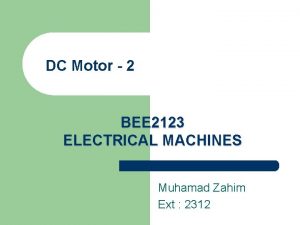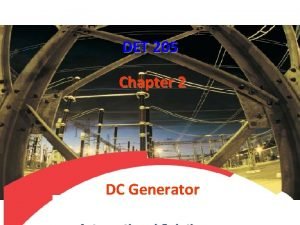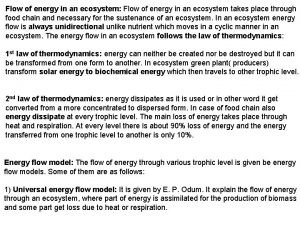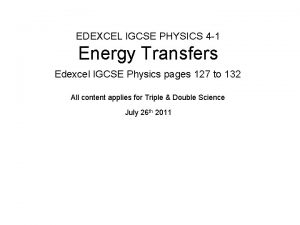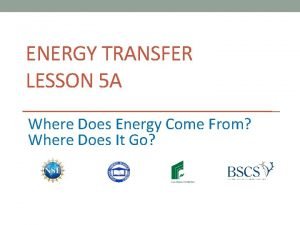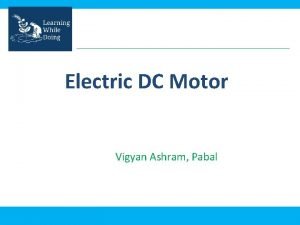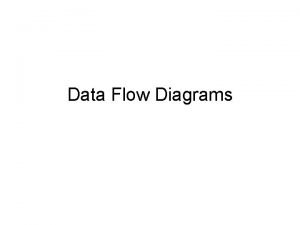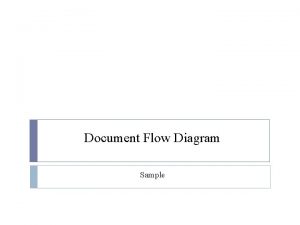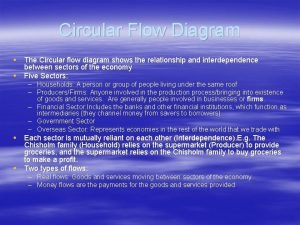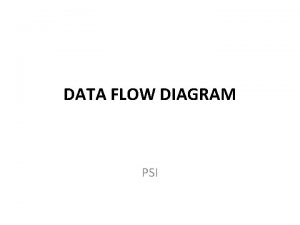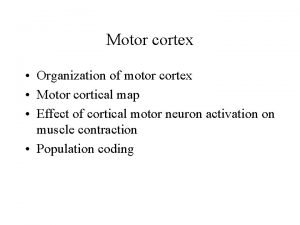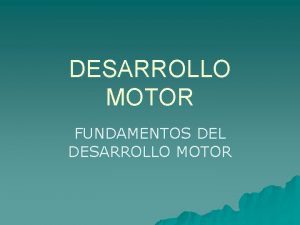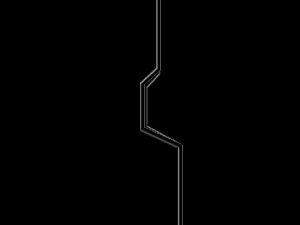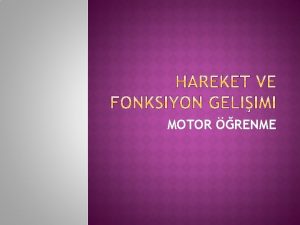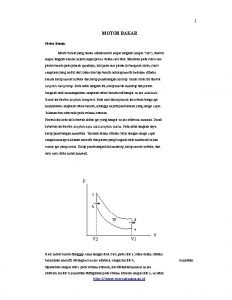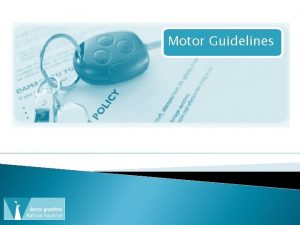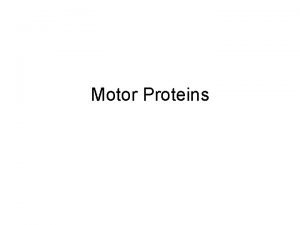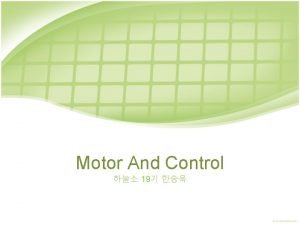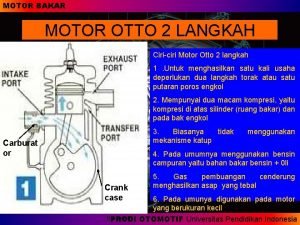Syafruddin Hasan Power Flow Diagram Figure Motor energy


















- Slides: 18

Syafruddin Hasan


Power Flow Diagram Figure Motor energy balance flow diagram.

Induction Motors � Figure � The shows the energy balance in a motor. supply power is: � The power transferred through the air gap by the magnetic coupling is the input power (Psup) minus the stator copper loss and the magnetizing (stator iron) loss. � The electrically developed power (Pdv) is the difference between the air gap power (Pag) and rotor copper loss.

Induction Motors � The electrically developed power can be computed from the power dissipated in the second term of rotor resistance: � The subtraction of the mechanical ventilation and friction losses (Pmloss) from the developed power gives the mechanical output power

Power and Torque in an IM From Fig. 7 -12 Input current : I 1 = VΦ / Zeq Pcu Stator: Pscl = 3 I 12 R 1 Core Losses : Pcore = 3 E 12 Gc Air-gap power : PAG = Pin – Pscl – Pcore = 3 I 22 R 2/s Pcu Rotor: PRcl = 3 IR 2 RR = 3 I 22 R 2 Note PAG : Pconv : PRCL = 1 : (1 -s) : S Example 7 -3

Induction Motors � The motor efficiency: � Motor torque (shaft load torque):

Equivalent Circuit Figure Single-phase equivalent circuit of a threephase induction motor.

Induction Motors Figure Modified equivalent circuit of a three-phase induction motor. The rotor impedance is transferred to the stator side. This eliminates the transformer

Induction Motors Figure Simplified equivalent circuit of a three-phase induction motor.

Induction Motors � The last modification of the equivalent circuit is the separation of the rotor resistance into two parts: � The obtained resistance represents the outgoing mechanical power

Blocked-Rotor test (cont…) The stator resistance was measured directly

IM Design Classes NEMA & IEC : Class A: normal Tst, normal Ist, normal S Class B: normal Tst, low Ist, low S Class C: high Tst, low Ist, low S Class D: high Tst, low Ist, high S Class E: low Tst, normal Ist, low S Class F: low Tst, low Ist, normal S

Starting Induction Motors Problems : - High Starting current - Low starting torque Determining of Istart � Read the rated voltage, hp and code letter from name plate. � Starting apparent power : Sstart = (rated hp)(code letter factor) Istart = Sstart / √ 3 VT Example 7 -7

Q U I Z 04 -10 -2005 � 1. Why the circuit equivalent of an induction motor can be approached by equivalent circuit of a transformer and draw it � 2. The output of a 3 phase induction motor is 9 k. W. Rotor copper losses is 0. 5 k. W. Motor runs at 5 % of slip. Stator loss is 0. 75 k. W a). Calculate the mechanical power that converter by this motor b). Determine the input power c). Calculate the efficiency

Speed Control of IM Ø Ø ns = 120 f / p by changing the electrical frequency (f) by changing the number of poles (p) (1) The methode of consequent poles (2) Multiple stator windings Ø Ø Ø by changing the line voltage: n proportional to V 2 by changing the rotor resistance Solid-state IM drives

Motor Protection �Over Current Protection �Over Load Protection

IM Ratings 1. 2. 3. 4. 5. 6. 7. 8. 9. Output power Voltage Current Power Factor Speed Nominal efficiency NEMA design Class Starting Code Service Factor (SF)
 Power flow diagram
Power flow diagram Dc motor power flow diagram
Dc motor power flow diagram Energy naturally flows from warmer matter to cooler matter.
Energy naturally flows from warmer matter to cooler matter. Oikos meaning
Oikos meaning Power triangle formula
Power triangle formula Cheese manufacturing process flow chart
Cheese manufacturing process flow chart Short shunt compound motor diagram
Short shunt compound motor diagram Double channel energy flow model
Double channel energy flow model Natural science grade 7 term 3 lesson plans
Natural science grade 7 term 3 lesson plans Light bulb energy transfer diagram
Light bulb energy transfer diagram Energy transfer flow diagram
Energy transfer flow diagram Three phase synchronous generator
Three phase synchronous generator Motor unit consists of
Motor unit consists of What is hunting in synchronous motor
What is hunting in synchronous motor Ac motor vs dc motor
Ac motor vs dc motor Pony motor starting synchronous motor
Pony motor starting synchronous motor Energy energy transfer and general energy analysis
Energy energy transfer and general energy analysis Energy energy transfer and general energy analysis
Energy energy transfer and general energy analysis Sales order processing flow chart
Sales order processing flow chart

